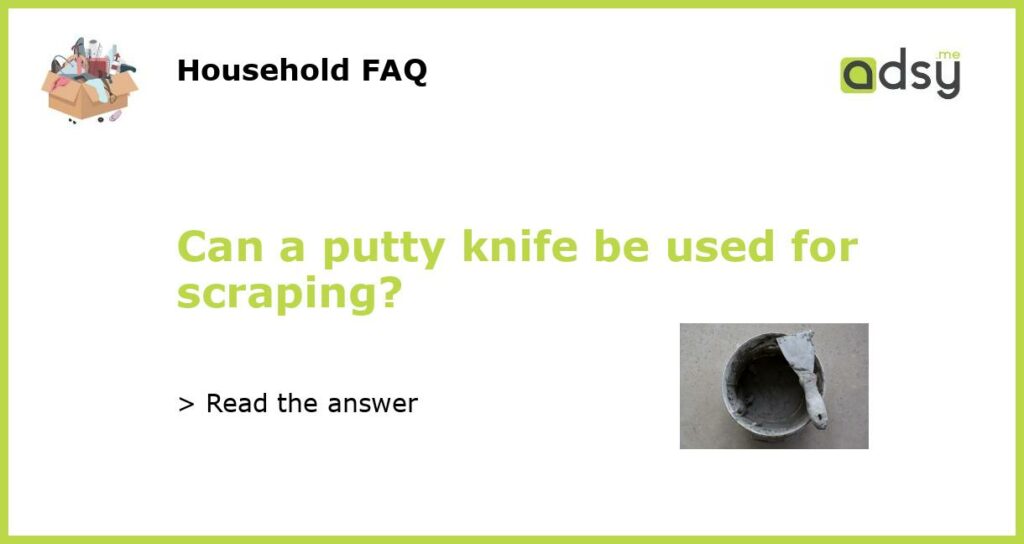Yes, a putty knife can be used for scraping
When it comes to scraping off old paint, removing wallpaper, or cleaning up dried glue, a putty knife can be a handy tool to have in your arsenal. While it’s not specifically designed for scraping, a putty knife can still be highly effective in certain situations. In this article, we’ll explore the various uses and benefits of using a putty knife for scraping, as well as some tips for getting the best results.
Benefits of using a putty knife for scraping
One of the main benefits of using a putty knife for scraping is its versatility. Putty knives come in various sizes, ranging from small and narrow to large and wide, allowing you to choose the right tool for the job. The flat, thin blade of a putty knife is typically made of steel or stainless steel, which makes it strong and durable. This makes it ideal for scraping off stubborn materials like old paint or dried glue.
Using a putty knife for scraping paint
If you’re planning to scrape off old paint from a surface, a putty knife can be a great tool to use. Start by preparing the surface by cleaning it thoroughly and removing any loose or flaking paint. Then, use the putty knife to gently scrape the paint away, working in a back-and-forth motion. Be careful not to apply too much pressure, as this can damage the surface underneath. If there are any areas where the paint is particularly stubborn, you can try applying a paint remover or scraping gel to soften it before using the putty knife.
Using a putty knife for removing wallpaper
Another common use for a putty knife is removing wallpaper. If you’re tackling a wallpaper removal project, start by wetting the wallpaper with warm water and a sponge or spray bottle. This will help to loosen the adhesive and make it easier to remove. Once the wallpaper is wet, use the putty knife to gently scrape away the wallpaper, starting at a corner and working your way across the wall. Be careful not to apply too much pressure, as this can damage the wall underneath. If there are any stubborn areas, you can try applying a wallpaper remover or using a scoring tool to create small holes in the wallpaper before using the putty knife.
Tips for using a putty knife for scraping
To ensure you get the best results when using a putty knife for scraping, here are some helpful tips:
- Choose the right size: Depending on the size of the area you’re working on, choose a putty knife with a blade width that will allow you to scrape effectively without putting too much pressure on the surface.
- Hold the putty knife at an angle: To avoid damaging the surface you’re working on, hold the putty knife at a slight angle. This will allow you to scrape off the material without gouging the surface.
- Use smooth, controlled motions: When scraping, use smooth and controlled motions to avoid causing any unnecessary damage. Avoid applying too much pressure or scraping too aggressively.
- Keep the blade sharp: Over time, the blade of a putty knife can become dull. To ensure optimal performance, keep the blade sharp by regularly sharpening or replacing it.
- Protect yourself: When scraping off old paint or removing wallpaper, it’s important to protect yourself. Wear gloves, safety goggles, and a dust mask to protect your hands, eyes, and lungs from any potential hazards.
In conclusion, a putty knife can indeed be used for scraping. Whether you’re removing old paint, tackling a wallpaper removal project, or cleaning up dried glue, a putty knife can be a versatile and effective tool to have in your toolbox. Just remember to choose the right size and angle, use smooth motions, and protect yourself while working. With the right technique and a little bit of practice, you’ll be able to achieve professional-looking results with a putty knife.






